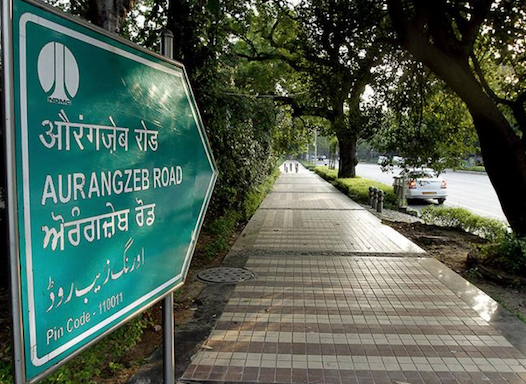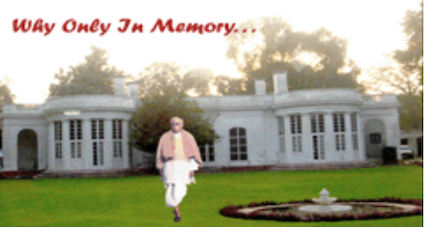Sardar Vallabh Bhai Patel had shifted to Delhi in 1946 when interim government was formed under the Prime Minister-ship of Pt. Jawahar Lal Nehru. While Sardar Patel could live in an official house, he settled for couple of rooms in a private house at the 1 Aurangzeb Road, which is now known as APJ Abdul Kalam Road. It witnessed heady days prior to freedom and post independence as well.
Even after India got freedom and Sardar Patel became country’s first deputy prime minister and home minister, he remained there and lived a very frugal life. It is from this abode that Sardar Patel, the Iron Man of India, ensured smooth integration of the troubled domains by not allowing the situation to deteriorate into civil unrest.
On September 13, 1948, the Indian Army launched “Operation Polo”, also called “Operation Caterpillar ” to liberate Hyderabad. Sardar Patel was monitoring the operation from his the then Aurganjzeb Road.
He described the idea of independent Hyderabad as “an ulcer in the heart of India which needed to be removed surgically”.In an operation that lasted for five days, the Indian Army took over the powerful state of Hyderabad.
Over 36,000 troops entered Hyderabad. Around 32 were killed and 97 injured on the Indian side.
In Hyderabad, 490 were killed and 122 wounded.
Finally, on September 17, 1948, nearly 13 months after India gained independence, the people and the state of Hyderabad were integrated with India. At 5 PM, the Nizam ordered a ceasefire and signed the instrument of accession with the government of India. Alas, you would not find any plaque which can give complete detail of Sardar Patel’s strong connections with 1 APJ Abdul Kalam Road house.
The house where Sardar Patel lived was owned by his friend, Banwari Lal. It is said that when he came to Delhi to join the interim government, Banwari Lal requested him to stay at his house. Patel agreed and began living there with his daughter, Manibehn Patel.

Except for Sardar Patel, almost all the top national leaders have a dedicated memorial in Delhi. “While ‘Statue of Unity’ in Gujarat is a fitting memorial of Sardar Patel, Delhi too should have his memorial acknowledging his role in nation’s integration. A Statue at Patel Chowk is not suffice.
If Birla House where Gandhi lived during the last 144 days of his life and 26 Alipore Road where Dr B R Ambedkar lived till his death in 1956 can be made their memorials, 1 Aurangzeb Road should similarly be made the memorial of Sardar Patel. Even the houses of Pt. Nehru, Lal Bahadur Shastri and Jagjivan Ram were made memorials.
It is said that when Atal Behari Vajpayee was the Prime Minister, there were some efforts in 2002 to convert 1 Aurangzeb Road house as the memorial of Sardar Patel. However, the effort could not see light of the day as Banwari Lal family was not ready to give the property for memorial purpose. Some say that they were asking staggering sum in lieu of the house. Currently, it is occupied by Vipul Khandelwal, grand son of Banwari Lal.
Maker of India’s Civil Services
Even before India got freedom, Sardar Patel was a busy man. He had visited the Metcalf House at Civil Lines in Delhi from his house at 1 Aurangzeb Road to address Indian Civil Servants on April 21, 1947. In Metcalf House, which was earlier the head-quarter of Indian Civil Service (ICS), Sardar Vallabhbhai Patel spoke to the first batch of Indian Administrative Service officers on April 21, 1947. Discussing the importance of ‘ Swarajya’ with them, Patel talked about the huge responsibilities before them in Free India.“Your predecessors were brought up in the traditions in which they … kept themselves aloof from the common run of the people. It will be your bounden duty to treat the common men in India as your own,” he said on April 21, a date marked ever since as ‘Civil Services Day’.
Sardar Patel also talked about the “steel frame of India”. A civil servant must cultivate an esprit de corps. It means to have a shared feeling of pride among team or group members. According to him, “A civil servant should regard it as a proud privilege to belong to the Service, covenants of which you will sign, and to uphold throughout your service its dignity, integrity and incorruptibility. In whatever position of responsibility, he or she may be a civil servant should always try how best to contribute to the well-being of India as a whole.”
According to Sardar Patel, a civil servant can trust the government to keep her or him contented and happy so that she or he may give her or his best, “but it would be unworthy of you if you make that a condition of service”.There Sardar Patel advised civil servants to maintain to the utmost the impartiality and incorruptibility of administration.“A civil servant cannot afford to, and must not, take part in politics. Nor must he involve himself in communal wrangles.”
Of course, Sardat Patel was the life and soul of Indian bureaucracy. It was he who laid –down the modern-day IAS institution in place of the Raj-era Indian Civil Services (ICS). The least we could do now is to rename Metcalf House as Sardar Patel Bhawan. Why we are so fond of the name of Metcalf House?
(The author is an eminent bi-lingual writer and columnist. He is based in New Delhi)


